Capstone Presentations: A Practical Parent Logistics Guide
Capstone presentations are a big milestone — for students, for teachers, and yes, for parents. If your child is in the AP Capstone program (or doing a similar senior research project), you might find yourself juggling logistics, nerves, and a desire to be helpful without hovering. This guide is written for you: practical, down-to-earth, and designed to walk you through the what, when, and how of supporting your teen through the presentation phase.

Why This Moment Matters — Beyond a Grade
The Capstone presentation is usually the public, culminating event of months (or even a year) of research, analysis, and rewriting. It’s more than a box to check on a transcript. For students it can:
- Transform research into a polished, persuasive story.
- Demonstrate communication skills colleges and employers value.
- Provide a concrete artifact of mastery — something your teen can talk about in essays and interviews.
For parents, it’s an opportunity to support autonomy and celebrate growth. Your role is logistical and emotional first, editorial only when asked.
Quick Checklist: Parental Mindset
- Be a steady presence — ask how you can help rather than assuming.
- Prioritize sleep, food, and realistic practice schedules over last-minute cram sessions.
- Encourage ownership — the presentation must reflect your child’s voice and work.
Timing and the Timeline: Plan Backwards from Presentation Day
Start with the presentation date and work backward. Most schools set aside a few weeks for final rehearsals and tech checks; your teen should aim to have a near-final script and slides at least one week before the presentation. Here’s a general backward timetable you can adapt:
| When | Student Tasks | Parent Support |
|---|---|---|
| 6–8 weeks before | Finalize research, begin organizing main argument and evidence | Offer to help with logistics like scheduling library time, quiet workspace |
| 3–4 weeks before | Draft full presentation script and create slides or visuals | Check in on deadlines, help assemble any visual materials |
| 1–2 weeks before | Rehearse, refine timing, and run tech checks | Listen to a rehearsal, time the presentation, and provide feedback focused on clarity |
| 3–7 days before | Polish delivery, finalize handouts or digital files | Confirm transportation, dress, and any required permissions |
| Day of | Arrive early, set up tech, breathe | Provide calm encouragement, healthy snacks, and a place to decompress after |
This table is a template — adapt it to your school’s schedule and your child’s working style. Some students need more time for visuals; others benefit from intense verbal rehearsal.
Logistics: The Practical Details You’ll Want to Manage
Small logistical failures can create big stress. Take these items off your teen’s plate so they can focus on content and delivery.
1. Calendar and Transportation
- Confirm the presentation date, start time, and estimated length. If there’s an audience sign-up, help your child register family members or guardians who plan to attend.
- Plan travel: know how long it takes to get to the school, where to park, and when doors open. Arrive early so your teen can set up and have one last calm moment.
2. Tech and Presentation Files
Tech glitches are common but preventable. Run these checks a few days before:
- Confirm the school’s preferred file format (PowerPoint, Google Slides, PDF) and have both. Export slides as PDF as a backup.
- Test the classroom projector or the platform if presentations are remote or hybrid. If your teen is presenting virtually, test their camera, microphone, and internet connection in the same location they’ll use on presentation day.
- Pack a USB drive, a charger, and any adaptors (VGA/HDMI or dongles). Leave nothing to chance.
3. Visuals, Props, and Handouts
Decide early whether handouts or props are necessary. If your teen wants physical handouts, print a small stack (10–20 copies) and organize them in a folder. For digital handouts, make sure the teacher or moderator has the link or file in advance.
Helping with Content — When and How to Offer Feedback
When your teen asks for feedback, focus on clarity, structure, and delivery — not rewrites. Here are practical ways to help without taking over.
Structure First: Tell Me the Story in 60 Seconds
Ask your child to explain the presentation in one minute. If the story is scattered, help them identify the central claim and two or three supporting points. This distillation is powerful: audiences remember a clear claim and a few compelling examples.
Two Helpful Editing Strategies
- Headline Method: Ask for a one-line headline for each slide. If the slide’s headline is fuzzy, the slide likely contains too many ideas.
- Evidence Balance: For every claim, have at least one example or data point. If a section feels thin, suggest swapping an anecdote for dry statistics to keep the audience engaged.
Rehearsal Techniques Parents Can Use
Practice is where performance confidence is built. But practice that actually helps is focused and kind.
Structured Rehearsals
- Run a timed rehearsal with a stop-watch. Keep it real: if the presentation must be 10 minutes, your teen should practice hitting 9–10 minutes to leave room for Q&A.
- Do one rehearsal with visuals and one without. A dry run without slides keeps the story tight and reduces reliance on reading from the screen.
- Simulate the environment: stand in a hallway, use a chair as a podium, or practice in front of a mirror or phone camera.
Giving Feedback Without Crushing Confidence
Use the “Two Stars and a Wish” method: name two strengths and one specific area to improve. For example: “Your opening hook was clear, your visuals supported the claim well, and I wish the conclusion tied back to the main research question more directly.” This keeps feedback constructive and actionable.
Managing Nerves — Practical Comfort and Confidence Hacks
Everyone gets nervous — even confident public speakers. Help your teen by normalizing nerves and giving them tools to manage them.
Simple Pre-Presentation Routine
- Sleep: Encourage a full night’s rest. Caffeine and late-night cramming almost always backfire.
- Nutrition: A protein-rich breakfast and a small, healthy snack before presenting can help maintain steady energy.
- Breathing: Teach a 4-4-4 breathing exercise — inhale 4 seconds, hold 4, exhale 4 — to reduce a racing heart.
Mindset Framing
Remind your teen that the audience wants them to succeed. Teachers and classmates are not adversaries; they’re there to hear what your child discovered. Encourage a mindset shift from “performing flawlessly” to “sharing something interesting.”
What to Bring on Presentation Day
Here’s a compact packing list you can help assemble the night before:
- Printed backup of the slides as PDF
- USB drive with presentation files
- Laptop charger and any necessary adapters
- Two copies of any handouts
- Water bottle and a light snack (granola bar, piece of fruit)
- Comfortable, school-appropriate outfit laid out and ready
Emergency Fixes
- If the projector fails: your teen should be ready to present with just the printed slides or deliver the talk without visuals.
- If the computer won’t boot: use the USB drive on a different device or provide the PDF handout and continue.
After the Presentation: Debriefing with Care
How you debrief matters more than the immediate grade. This is a learning moment that should build reflection and resilience.
Questions to Ask (Without Interrogation)
- What went better than you expected?
- What surprised you about the audience’s reaction or the Q&A?
- What would you do differently next time, if anything?
Focus on curiosity. If your teen is disappointed, validate their feelings and name at least one concrete improvement they can pursue next time.
How Tutoring and Targeted Support Fit In
Sometimes a student needs focused, expert input — whether for research design, slide polish, or presentation coaching. Personalized tutoring can be a gentle booster: one-on-one guidance helps with time management, targeted feedback, and rehearsal structure. Programs like Sparkl’s personalized tutoring offer tailored study plans and expert tutors who can provide that human coaching plus AI-driven insights to track progress. If your teen is juggling multiple responsibilities, a short coaching stint focused on presentation strategy can make a large difference in confidence and clarity.
When to Consider Extra Help
- If your teen struggles to turn research into a clear argument
- If anxiety is so high it blocks practice or sleep
- If timing and pacing remain inconsistent despite rehearsal
Real-World Examples and Mini Case Studies
Here are two brief, anonymized sketches that show how different students and parents navigated the capstone presentation phase.
Case Study A: Maya — The Over-Prepared Researcher
Maya had a phenomenal data-driven project but wanted to include every detail. With parental encouragement, she worked with a tutor to prioritize the narrative. Together they distilled the argument into three main takeaways and practiced transitions. On presentation day she used a single, powerful visual to anchor the talk rather than an overcrowded slide deck. The result: clarity, confidence, and strong Q&A.
Case Study B: Jonah — The Reluctant Speaker
Jonah knew his subject cold but hated public speaking. His parent focused on logistics: secured an early arrival, handled the tech setup, and helped him rehearse in small, low-pressure sessions. They introduced a calming pre-presentation routine and scheduled two tutoring sessions for mock Q&A practice. Jonah delivered a shorter, punchier presentation that showcased his research and left time for a confident set of responses during Q&A.
Common Pitfalls and How Parents Can Prevent Them
- Overediting: Parents who rewrite slides unintentionally change voice. Ask before editing — small suggestions beat wholesale rewrites.
- Last-minute tech assumptions: Don’t assume the classroom tech will work the same way at home. Test it early.
- Ignoring mental load: Students juggling sports, jobs, or other APs may need schedule adjustments rather than added pressure.
Final Tips: Celebrate More Than the Outcome
At the end of the day, the capstone presentation is a rite of passage. Celebrate the process, the late nights, the small improvements, and the courage it took to present work publicly. Whether the grade is perfect or someplace in the middle, the experience teaches research, communication, and resilience — skills that outlast any score.
Here are three small celebration ideas that are meaningful and low-key:
- A quiet dinner at home where your teen chooses the meal
- A framed copy of the presentation title slide to hang in their workspace
- A follow-up planning session to translate presentation experience into material for college essays or interviews
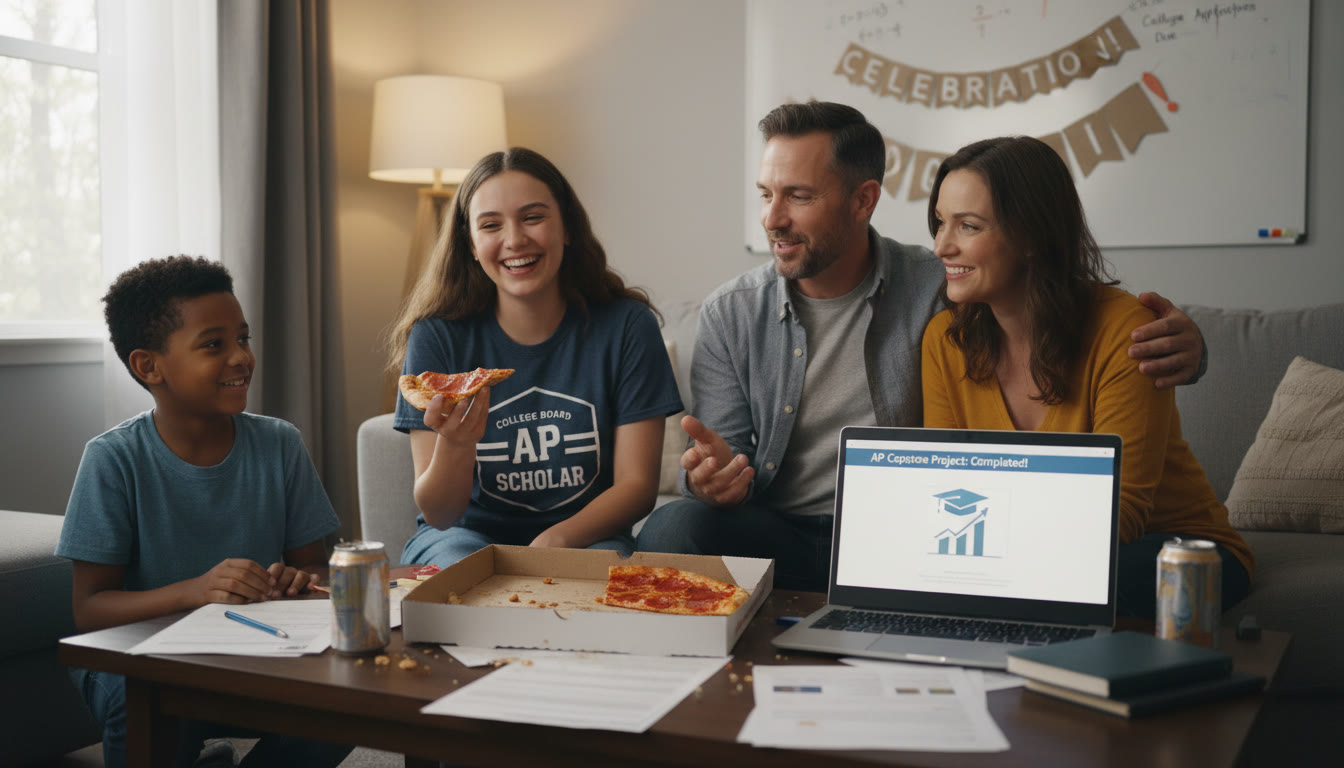
Closing Thoughts
Being a parent during capstone season means balancing practical logistics with emotional support. You don’t need to be an expert in the subject matter to help your teen succeed. Arranging technology checks, managing timing, encouraging rehearsal, and helping them reflect afterward are all invaluable.
If your teen needs occasional, focused help — whether to tighten an argument, smooth delivery, or build a rehearsal plan — consider short-term personalized tutoring. The right tutor can provide structure, specialized feedback, and confidence-building strategies in just a few sessions.
Above all, remember that your calm presence and steady encouragement are often the most important supports of all. Celebrate the effort, not just the result, and help your teen carry the lessons of the capstone forward into whatever comes next.
Quick Resources for Parents (Checklist)
- Confirm date, time, and location of the presentation.
- Run a tech test and save multiple file formats.
- Help your teen prepare a timed rehearsal and a printed backup.
- Pack snacks, a charger, and calm encouragement for the day.
- Debrief with curiosity and plan next steps for essays or interviews.
Good luck — and enjoy the show. This is your teen’s moment to share what they discovered. With a little planning and a lot of encouragement, it can also be one of the most memorable and meaningful milestones of their high school experience.

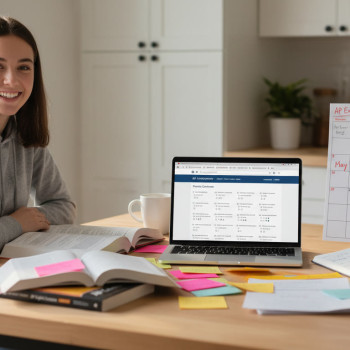

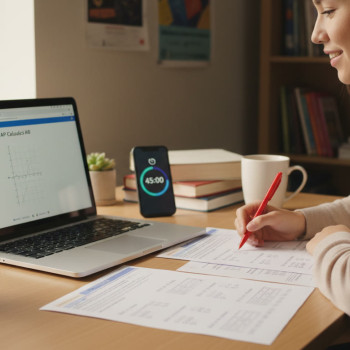
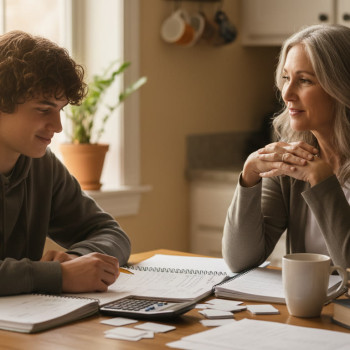
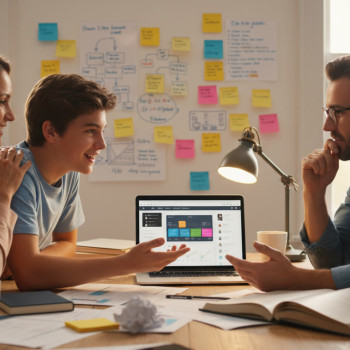










No Comments
Leave a comment Cancel